Living the Island Life in Holbox, a Slice of Heaven Off the North Coast of Mexico

Main Beach Pier, Isla Holbox, Mexico. Photo: Crystal Egan/Alamy Stock Photo
A tiny island off the north coast of Mexico has transformed from a
sleepy outpost into a hub of boutique hotels, boho design and barefoot chic.
It had been a dozen years since I set foot on Holbox (pronounced Holbosh), a slip of an island off the Yucatán Peninsula where the Caribbean Sea flows into the Gulf of Mexico. In 2010, I’d been looking for an alternative to Tulum, the hipster hot spot two hour’s drive south of Cancun. Tipped off by a local, I’d driven the other way, two and a half hours north of Cancun, collecting my mother, whose 60th birthday it was, at the airport en route. Together, we set off for the dusty, nondescript town of Chiquilá near the border of the Yucatán and Quintana Roo, to catch a half-hour ferry to the unknown island of Holbox.
Forty-one kilometres long, but only 1.6 km wide, Holbox snakes along the ocean, 12 km off the coast; the island’s main square ringed by a handful of restaurant patios, cheerily strung with Christmas lights. Hotels on Holbox were few in 2010, and Airbnb, launched two years prior, had not yet reached its shores. Of the trio of beachfront hotels, Casa Sandra was the luxury lodging, Mawimbi its groovy bohemian alternative and, finally, the modest, self-catering cabanas of Casa Las Tortugas. We checked into the latter because we liked the option of making some things ourselves — coffee, breakfast, the odd salad — but moreover because it was the sort of island paradise, so gorgeous and thrillingly untouched, that it didn’t matter where you slept.
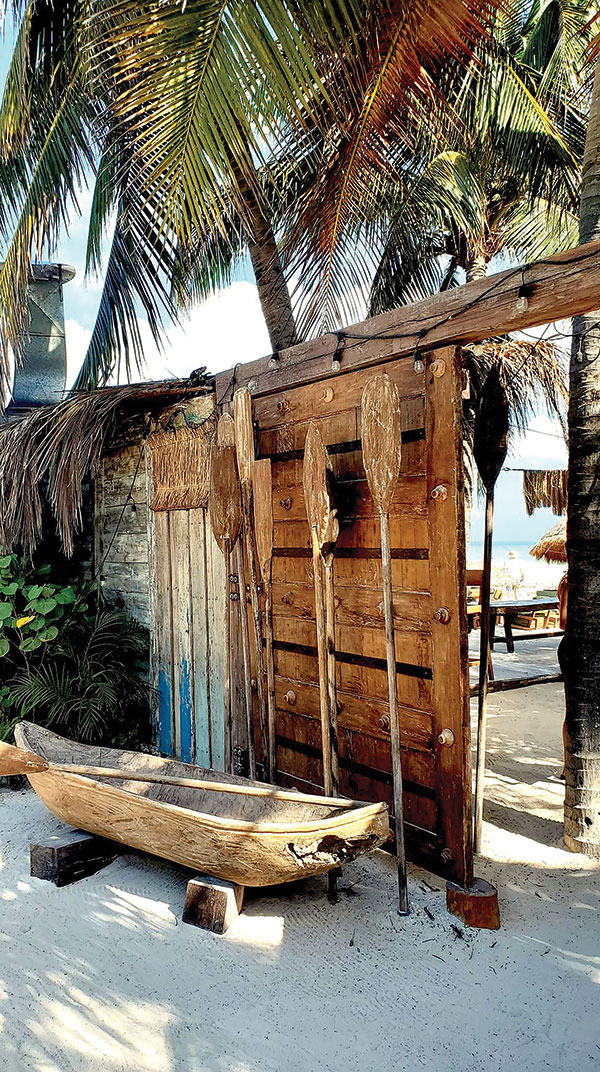
Thirteen years later, I remember Italian architect Gianni Golinelli, our charming host who oversaw the property shirtless and barefoot. His English as good as our Italian, he cared for us by dropping off ripe mangos and fresh ceviché he’d prepared from seabass caught by local fishermen. Turquoise waters, pristine beach, sugar-sand streets, golf carts and bicycles the only modes of transport; no cars, no pavement, no tourist hordes, no chain shops or international fast food. We could hardly believe our good luck.
Holbox was also one of the few places on Earth — besides Australia, Tanzania, Thailand, the Philippines and Bali — where you could dive with whale sharks, something my mother had always wanted to do. After a long, choppy ride on a speedboat to the middle of the ocean, deep and navy blue, we found ourselves surrounded by these dauntingly massive creatures that date back 60 to 150 million years to the Jurassic age. Ten metres long, you could fit a Bentley into their enormous mouths, yet their diet consists of small fish, shrimp, and plankton – not humans. Utterly harmless yet wildly impressive, it was a bucket list experience for us both.
We celebrated with sunset margaritas at the Mawimbi, next door to our shack at Tortugas, perched on the tree stumps that comprised its bar stools. Between the high seas adventure, the lobster tacos and $1 Coronas, herons and egrets blithely strolling the deserted beach, pelicans wolfing whole fish, it was a postcard, Robinson Crusoe beach escape, and I won “Birthday Holidays” that year.
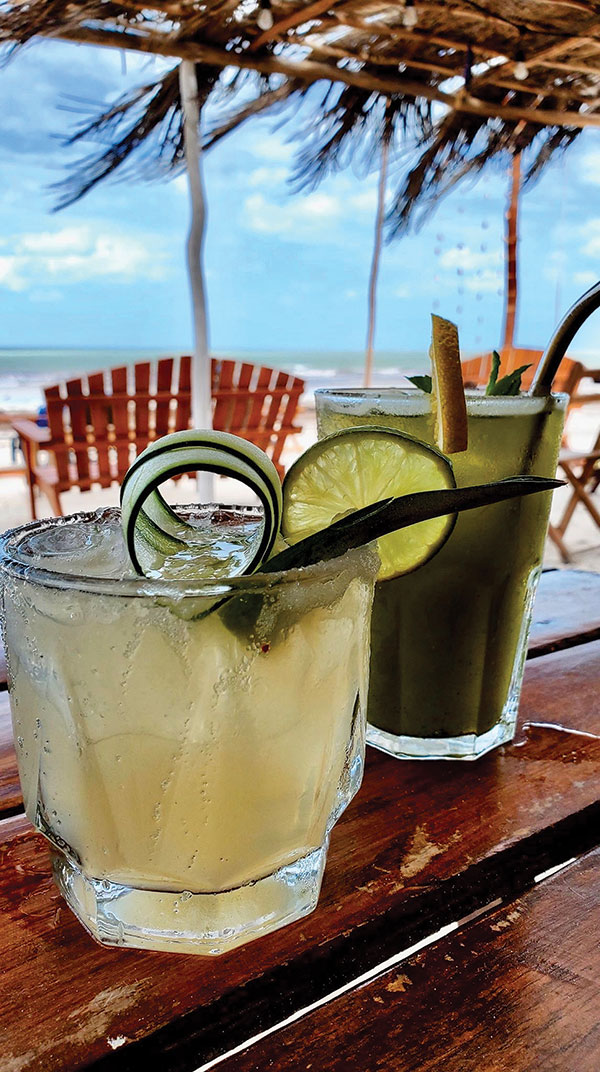
Fast forward to January 2022. Having (barely) survived two years of pandemic lockdown in Toronto, some travel restrictions had finally been lifted, but airline routes were still a mess. What I needed was world-class beach. Rejecting destinations that required me to connect or pay four-digit fares, Holbox sprang to mind. Tossing sandals, tunics, sunscreen and bikinis into a carry-on, I grabbed a girlfriend, and off we went.
I was surprised to find the tiny island now had an airstrip. We could skip the drive from Cancun to Chiquilá and land on the island in half an hour — if we booked a prop plane, which costs US$800 one way, for one to five passengers, and is a great option if cash isn’t an issue or you’re travelling with a small group. Eye on budget, options are car hire from Cancun ($200) or booking seats on a shuttle bus to Chiquilá ($50). From here, the 30-minute ferry ($15) departs every half hour, 6 a.m. to 8:30 p.m.
On the Holbox side, you hail one of the golf cart taxis that gather at the dock for every arriving ferry to take you to wherever you’re staying. A pre-trip Google had revealed a shockingly wide array of lodging that ran to eclectic small hotels, bungalows, design-y holiday homes and swank villas and plentiful Airbnbs. Not travelling in peak season (April, July, August), we’d opted to book the first two nights at a beachfront hotel, a block from the main square, from where we could wander the island and review our best options — in person.
A full day of travel — four-hour flight, drive from Cancun, the ferry — we arrived before sunset, gagging for a cocktail. Happily, our random choice, the hotel Amaité, was far more charming than the website suggested. Its 15 unassuming rooms were fronted by a stylish seaside lounge strewn with wooden daybeds, palm-fringed rattan lamps and speakers hidden in the palm trees playing chill tunes. It was a beachy-chic redo not reflected in online photos. We ordered a round of restorative margaritas and decided to head over to Casa Las Tortugas for dinner. Our waiter pointing us in the right direction, “just up the beach.”
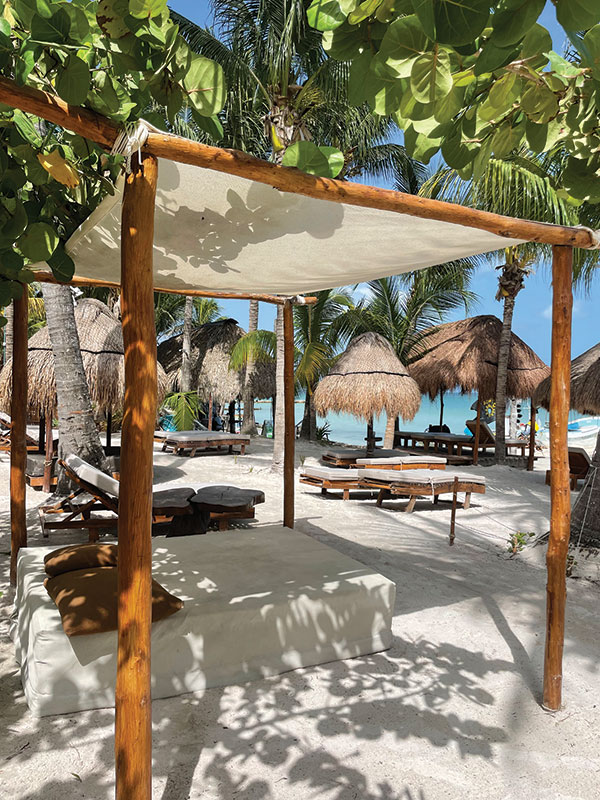
Well, wow. This is not the castaway joint my mother and I’d stayed at more than a decade ago, but a stunning 24-room design hotel with an oceanfront drinks-and-dining scene awash in stylish guests. Sun-kissed children scampered around the fire blazing in a huge black cauldron, adults lounging in bean bags, downing champagne and negronis. Further research — the bartender — revealed that the property had been taken over by Golinelli’s daughter.
Francesca Golinelli, a Bologna-based fashion executive for YOOX, had quit her job and built this luxe edition of Casa Las Tortugas from the ground up. Beyond the hotel’s beach boîte, Mandarina, there was also a second-floor Japanese dining room, AMA, lined in pop art Frida Kahlo murals, and the ultra-hot spot, Luuma, directly across the street. Surprisingly, for all the tropical chic, menu prices were not outrageous and we wound up dropping by every day for breakfast, sunset drinks or dinner, given the laid-back allure of it all.
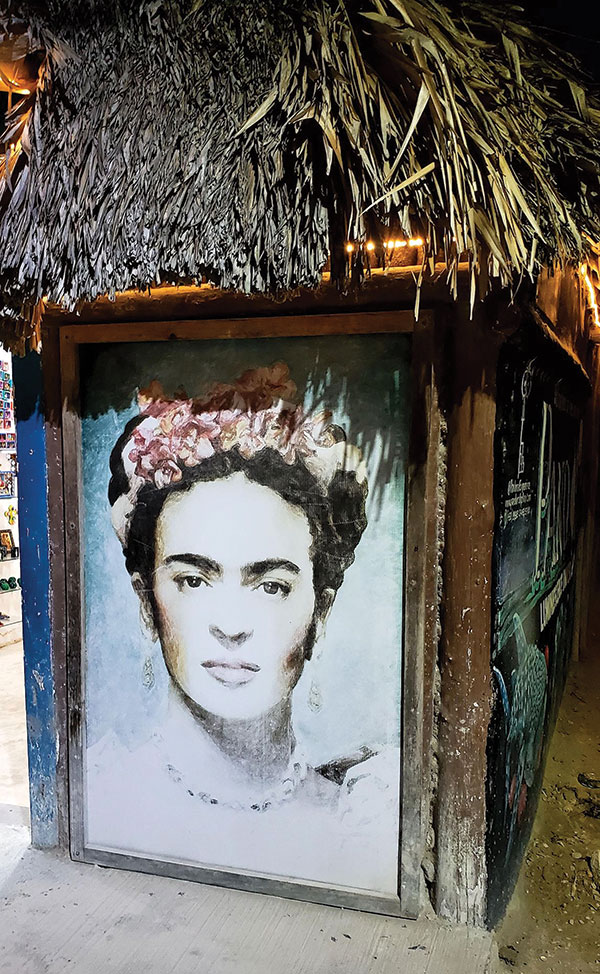
A couple nights in, we’d discerned that the best location — the best beach — was the northeast coast, where the island’s bustling beachfront gave way to the protected Yum Balam Nature Reserve and miles of unspoiled shoreline, edged by a sandbar. You walk for miles and end up in a flamingo sanctuary.
Only two hotels have outposts along this stretch of coast, Las Nubes and Villa Flamingos, where rooms range from $500 to $800, for the posh, isolation and private beach. On a budget, your best options are the eight-room Casa Hridaya, $200, the very last oceanfront hotel on the east edge of town, or the family-run Villas Tiburon beside it — 24 clean, simple rooms ($150), wrapped around a jungle courtyard with a rooftop bar overlooking the island’s best coastline, directly adjacent to the reserve and the sandbar.
Back in town, I noted that the glamour of the revamped Casa Las Tortugas, now the beating heart of town, seems to have given the island’s original hoteliers a run for their stylish money. The next door Mawimbi has enjoyed a swish upgrade since I was last here and Casa Sandra, now known as Ser Cassandra, the elegant 17-room guesthouse owned by artist Sandra Pérez Lozano, now boasts one of the island’s most sophisticated oceanfront lounges, Mojito, where menus reflect her Cuban heritage – and include the island’s best ceviche.
Opened 19 years ago on what was then a secluded slice of beach a 10-minute stroll from town, Ser Cassandra now sits among a string of thatch-topped hotels, watering holes and restaurants that stretches one end of the island to the other. Many launched in the last decade, there’s no shortage of notable places, ex-pat- and local-owned, to drink, dine, sleep or shop on Holbox these days.
Al fresco brunches at the boho Bah Bah are a treat and everyone orders the wood-fired lobster pizza on the patio at Roots where playlists cycle between Latin and Reggae. Five out of 10 beach bars are strung with swing chairs, including the trendy, whitewashed Coquitos Beach Club, perfect for lunch and a rosé-splashed afternoon. The Caribbean-style Hot Corner is exactly that by midnight, always hopping, people dancing in the street. Milpa does a modern take on classic Mexican cuisine. Ser Esencia offers the dual pleasures of acclaimed Mexican chef Roberto Solis and elegantly rustic interiors. Aldea Kuka, a small compound of luxury palapas with, arguably, the island’s coolest rooms, is home to a swish, ocean-view eatery.
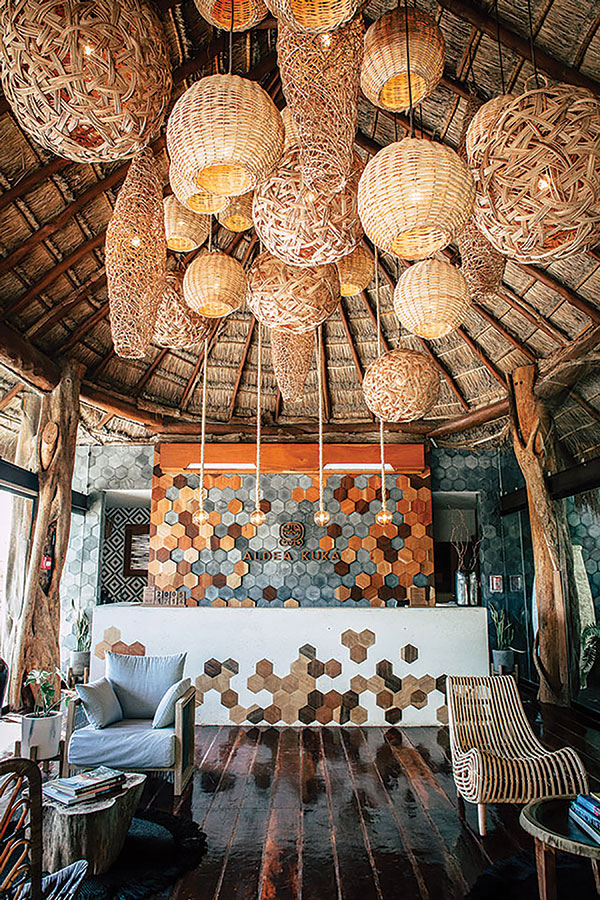
Many of these showcase the island’s distinctive, super-organic design sense: a blend of all-natural fibres like jute and hemp, wood, seashells, coconuts, rattan, opulent macrame, artfully woven twigs, densely palm-fringed everything, and enviable creativity. Truly, those with an eye for boho design will find themselves snapping endless inspo images in Holbox. At the same time, the island is lined with inexpensive taquerias and ceviche spots and remains the sort of place where few establishments, beyond fine dining rooms, care if you wear shoes.
It’s not the deserted cay I’d brought my mother to more than a decade ago, that undiscovered island where we’d knocked on our hotelier’s door for salt and pepper or hot sauce, downed beers on palm tree stumps overlooking miles of deserted beach, and spent sunset drinks deciding which of the island’s five restaurants, all of which served cheap, fresh lobster, to do for dins.
Yet, for all the stylish bars and dining rooms, chic hotels and shops that have cropped up across Holbox in the last dozen years, it’s still a car-free island that’s white-sand streets are lined in hand-painted signs offering $3 “breakfasts” of Corona and guacamole. Its core ethos — Good Vibes Only — on display everywhere, is, these days, rendered in artfully neon script at a boutique hotel beach bar rather than the casually chalked blackboards of not so long ago.
A version this article appeared in the Oct/Nov 2022 issue with the headline ‘Hola Holbox’, p. 96.
RELATED:
Viva Mexico: 5 Recipes to Bring Home a Taste of the Yucatan